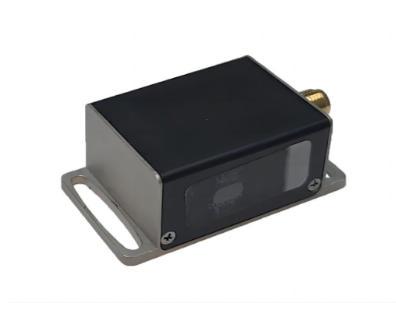Radiation Effects on 780 nm Space AOM Series and Mitigation Strategies

Space environments expose optical components to a spectrum of ionizing radiation—protons, electrons, heavy ions, and cosmic rays. For 780 nm Acousto-Optic Modulators (AOMs), radiation can degrade crystal quality, induce absorption bands, and impair acoustic transducer performance. Understanding and mitigating these effects is vital for long-duration missions beyond low-Earth orbit, such as deep-space probes and lunar platforms.
Radiation-Induced Defects in TeO₂ Crystals
High-energy particles displace lattice atoms in the TeO₂ crystal, generating color centers that absorb visible and near-infrared light. At fluences above 10¹⁰ protons/cm², a broad absorption band around 780 nm emerges, leading to insertion losses of several decibels. These defects also scatter acoustic waves, decreasing diffraction efficiency and broadening the radio-frequency (RF) response.
Testing Protocols
Qualification involves exposing AOM samples to representative radiation profiles: 10 MeV protons up to 1×10¹¹ particles/cm², 1 MeV electrons to 1×10¹³ e–/cm², and heavy ions with linear energy transfer (LET) up to 50 MeV·cm²/mg. After each irradiation step, insertion loss, diffraction efficiency, RF bandwidth, and optical beam quality are reevaluated. Typical results show a 0.8 dB increase in insertion loss per 1×10¹⁰ protons/cm², and a 15% drop in efficiency after cumulative exposure.
Mitigation Strategies
Pre-Flight Crystal Pre-Irradiation (“Burn-In”)
Controlled proton irradiation in the laboratory “soaks” the crystal, stabilizing defect formation before launch. By driving color-center formation and subsequent annealing at elevated temperature (~80 °C), residual post-launch darkening is minimized.
Radiation-Hardened Optical Coatings
Applying multi-layer dielectric coatings specially formulated with radiation-resistant oxides (e.g., HfO₂, Al₂O₃) on entry and exit faces reduces vulnerability. These coatings maintain >99.5% transmission at 780 nm even after 2×10¹⁰ protons/cm².
Physical Shielding
Integrating AOM modules within local shielding enclosures—using aluminum or polyethylene layers—attenuates low-energy protons and electrons. A 2 mm aluminum shield cuts 1 MeV electron flux by 90%, while 5 mm of polyethylene significantly reduces high-energy proton exposure, prolonging device life.
Dynamic RF Compensation
Real-time monitoring of diffraction efficiency via a fraction of the diffracted or zero-order beam enables automatic adjustment of RF drive power. As radiation-induced absorption rises, the system increases RF amplitude within safe limits to preserve diffraction contrast.
Long-Term Reliability Projections
Modeling based on expected cumulative mission doses (e.g., 5×10¹⁰ protons/cm² over a 5-year lunar orbiter mission) predicts a 3 dB total insertion loss increase and a 25% efficiency degradation in unmitigated units. With combined burn-in, shielding, and dynamic RF compensation, projected losses fall below 1 dB, and diffraction efficiency remains above 75%, meeting mission specification.
Conclusion
Radiation poses a significant risk to the optical performance and longevity of 780 nm Space AOM Series devices. Employing a multi-layered mitigation approach—crystal pre-irradiation, hardened coatings, physical shielding, and adaptive electronics—ensures stable operation in high-radiation orbits and deep-space trajectories. These strategies extend mission lifetimes, maintain signal integrity in critical laser systems, and support emerging applications such as deep-space quantum communication and autonomous navigation.
- Art
- Causes
- Crafts
- Dance
- Drinks
- Film
- Fitness
- Food
- Jogos
- Gardening
- Health
- Início
- Literature
- Music
- Networking
- Outro
- Party
- Religion
- Shopping
- Sports
- Theater
- Wellness


